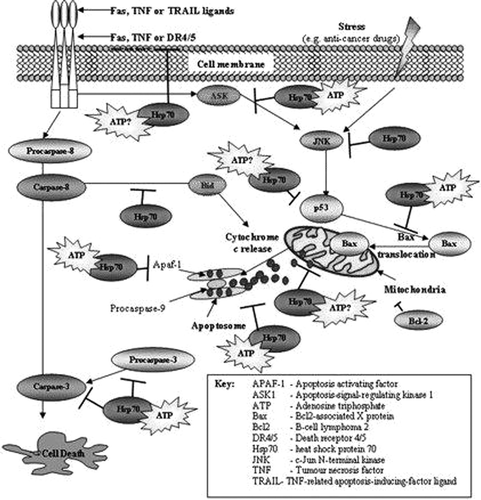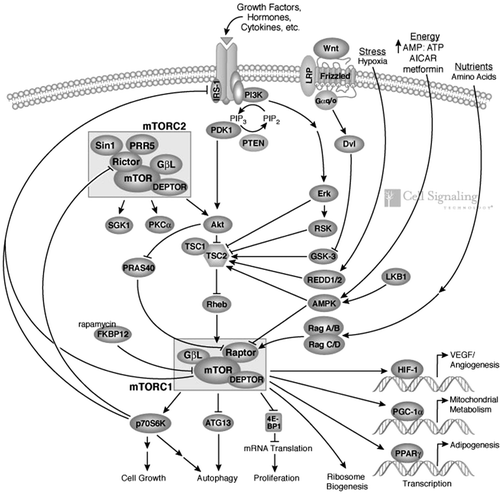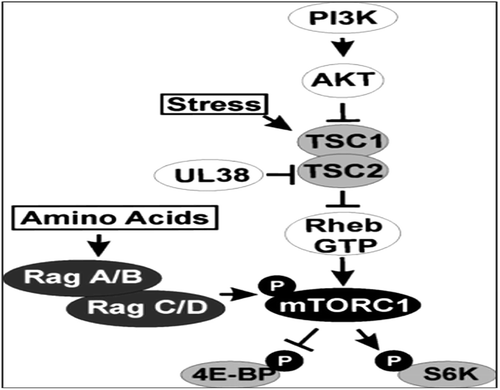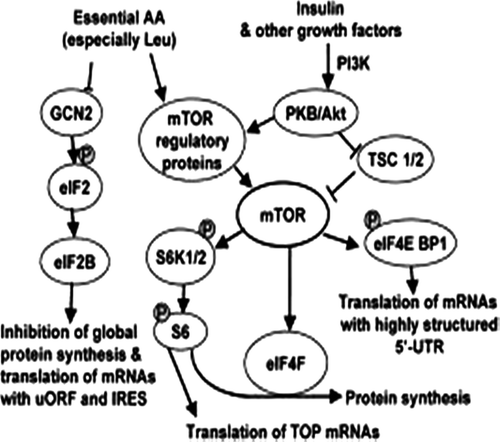Figures & data
Figure 1. JNKs, apoptotic factors, chaperonins (HSP-70), and cytokines (TNF-α) involved in cell death.

Figure 2. The mammalian target of rapamycin and its correlation to angiogenesis, mitochondrial metabolism, and adipogenesis. Pathway diagram reproduced courtesy of Cell Signaling Technology, Inc. (www.cellsignal.com).



